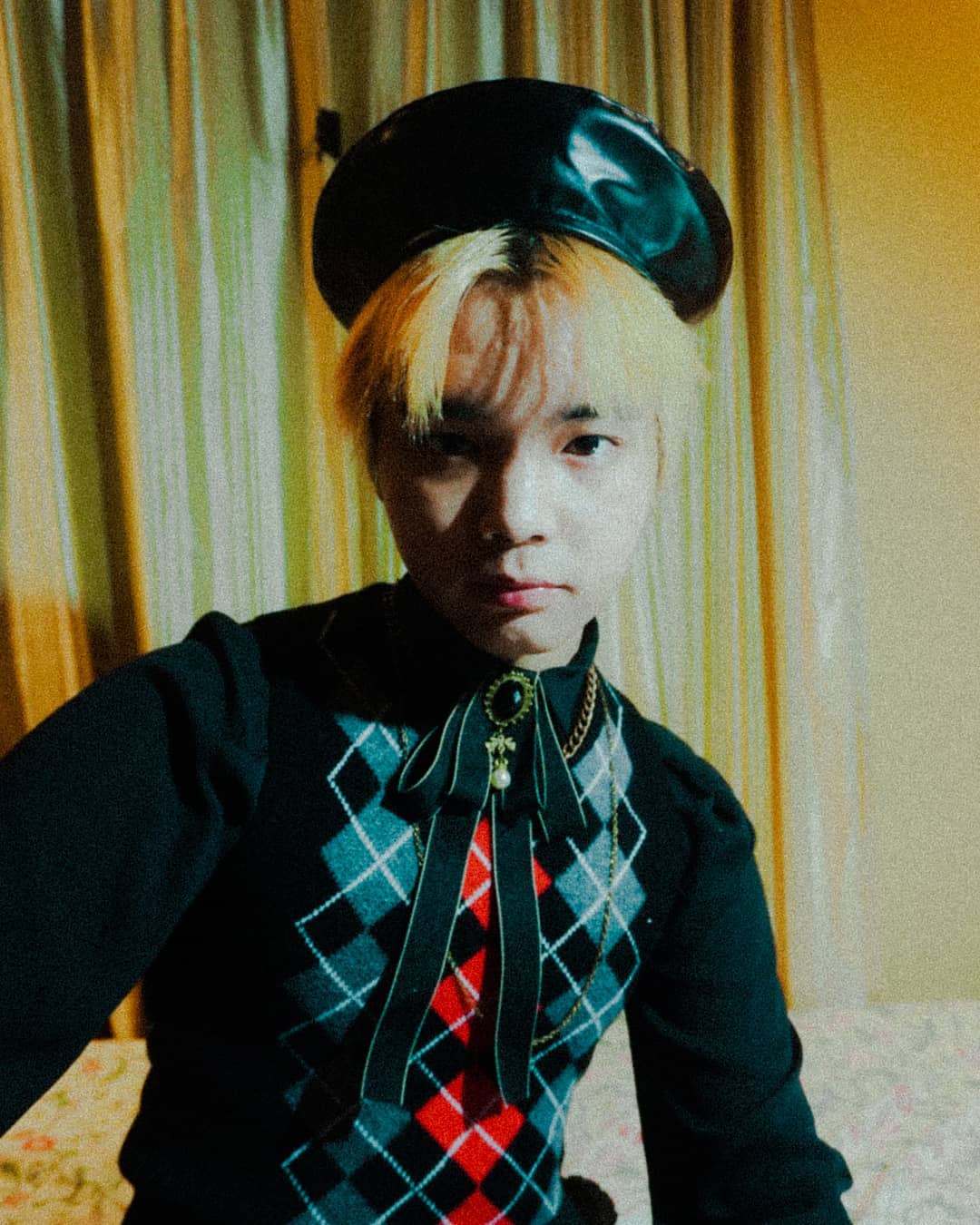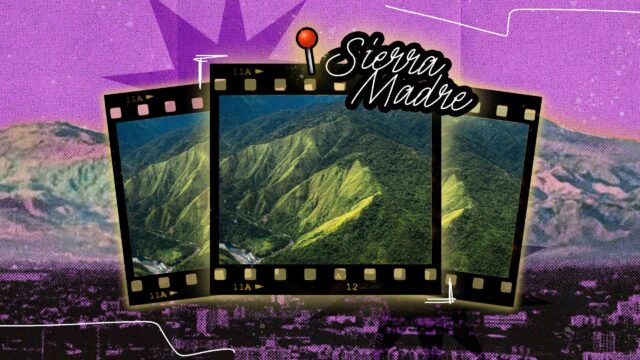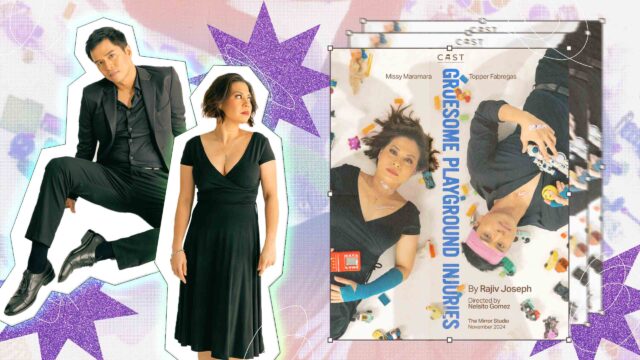In a non-conforming proposition of perspective and purpose, young Filipino artists Jude Macasinag and Fred Espina are fashioning a fascinating future that more than meets the eye.
“When the whole of France shut down last March to May and June of last year, we could hardly get any bit of fabric we needed even though we still had projects to fulfill,” shares young Filipino artist and design student, Jude Macasinag, setting the context of what eventually be a creative introspection of sorts. “Fortunately enough, that didn’t hinder my will to create anything new. So, the lack of materials only pushed me to seek different avenues into which I could continue to creatively explore. During online classes also, we had a discussion about the art movement Neo-Concretism, which to briefly summarize talked about how we can view ideas of art beyond its physicality as material objects (paintings, sculptures) and perhaps see that idea onto another form.”
With this bout of artistic existentialism, the Plato-penned proverb comes to mind as stated in the philosophical dialogue, Republic: “Necessity is the mother of invention.” As common as this finds itself in many earnest essays of the youth, it holds a whole lot of truth, especially since the impressionable ideal has been unceremoniously punctured by the pandemic.
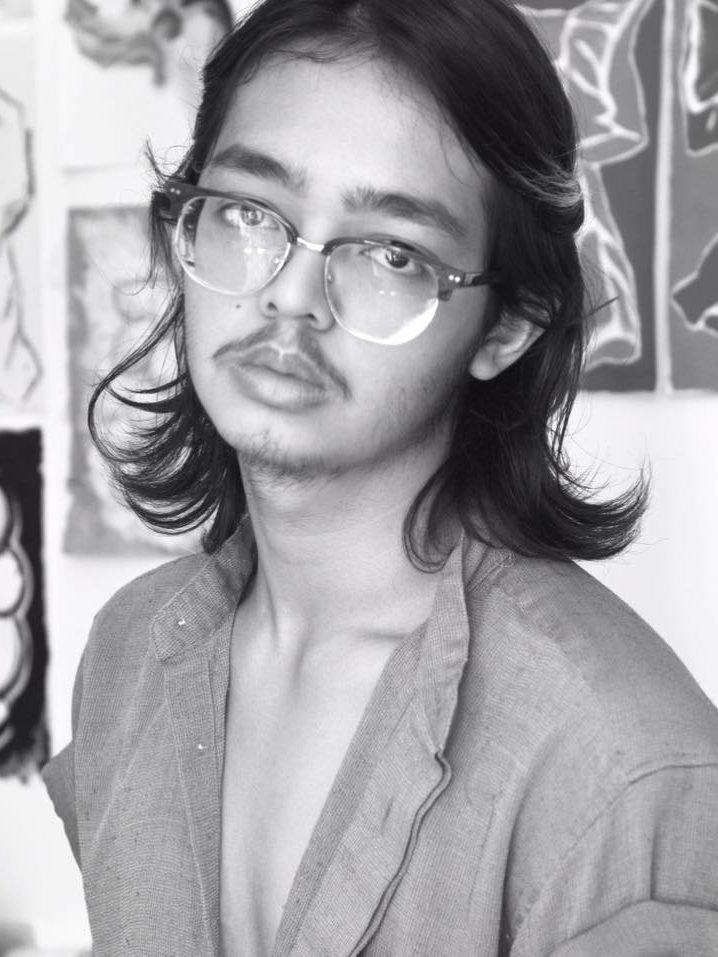
Jude Macasinag 
Fred Espina
With the deflation of many energies, from the creative to the economical, the world has since acted from disbelief to drummed up drive, finding ways how to not only cope with the blurring of the days with distractions, but to ultimately survive this predicament through passion and purpose. Anchored on design and a distinct narrative, many young Filipino artists have taken to their specific mediums to tell their story from their specific points-of-view, which in turn informs and inspires the perspective of those who can see it. “One of the advices I received from a mentor was that when I create, I should make it personal. It’s not about trying to make something look unusual, but rather about how you input a part of yourself into your work and make something new with it, hoping that other people would, in return, somehow relate with your own perspective,” Jude explains.
“That said, I have been trying to observe the new things happening in both art and fashion in France and in the rest of the world, but something—a connection—felt lacking. The difference I found between the approach of creating in the Philippines vs. with that in France is that in the Philippines, there’s a more collectively human sense imbued in the process, while here it seems to be a somehow more immediate response. My aim was to tap into the Filipino emotional consciousness through familiar symbols and objects (the human) while showing it through new media (the immediate). In this way, I think I am (hopefully) able to create work that is innovative enough and is also relevant and understandable to a wider audience.”
Related: AT 19 YEARS OLD, HERE’S HOW THIS FILIPINO DESIGNER MADE IT TO FASHION SCHOOL IN FRANCE
As Told By Young Filipino Artists
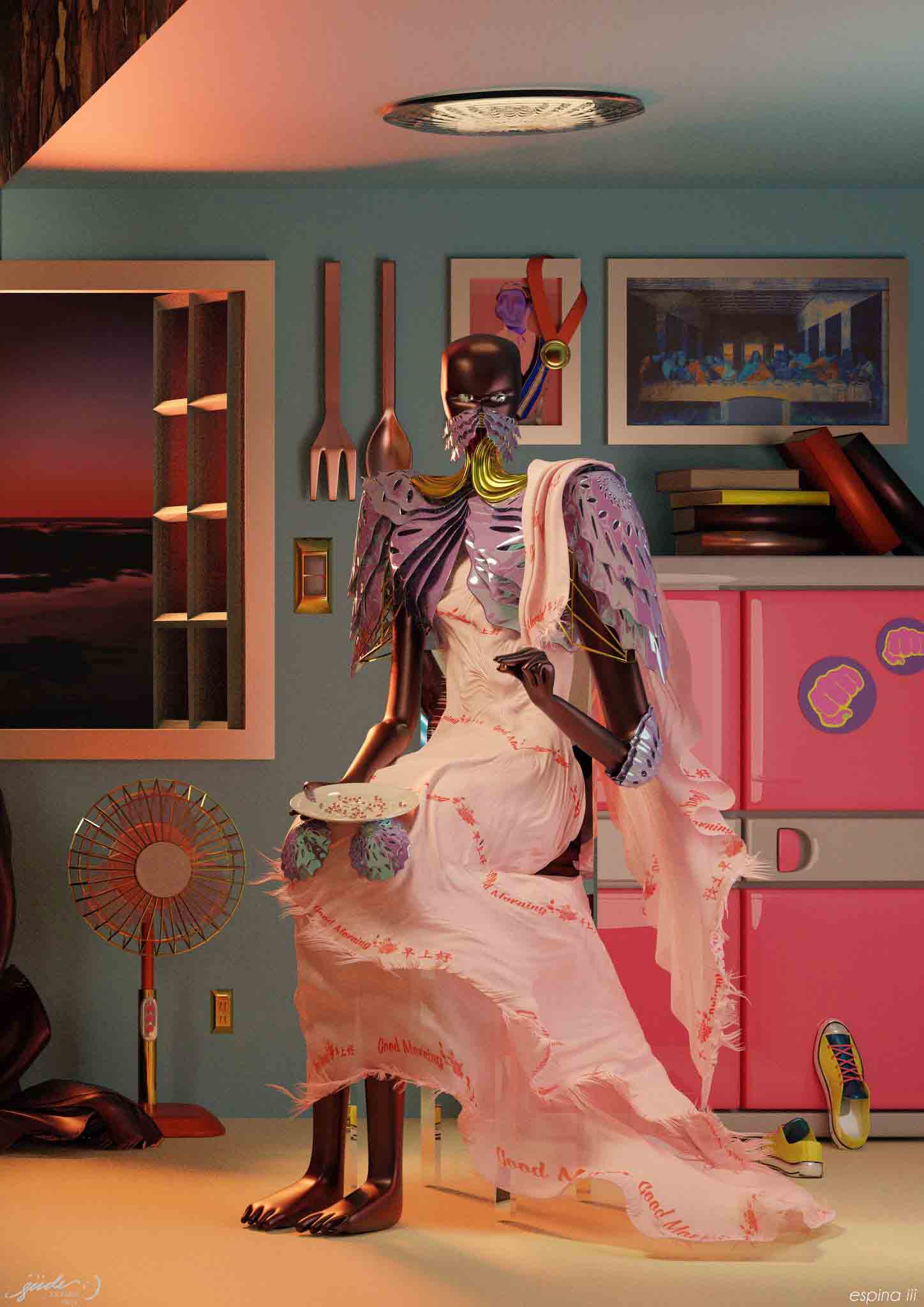
With a desire to expand the way one sees and knows something, in this case, image and meaning-making in the lavish lens of fashion, Jude Macasinag took to his own liberties, education, and inspiration to create an evocative exposition that is nothing is nothing short of breathtaking. With In Dividend’s Day, we are immediately immersed in a hyper-realized sense of surreal, where what appears to be those sweeping works of art that hovered above our heads in a traditional Filipino dining table becomes an essay of escapism that traipses along the cornerstones of the past, the present, and the possible.
An expansion of the way we perceive our periphery, this three-dimensional triptych in the tradition of fashion editorials that have long tickled the fancy of many pundit and creative in the industry we subsist in is upon closer inspection is a clever exposé of social injustices coddled in the fantasy of style and sentimental sensibility.
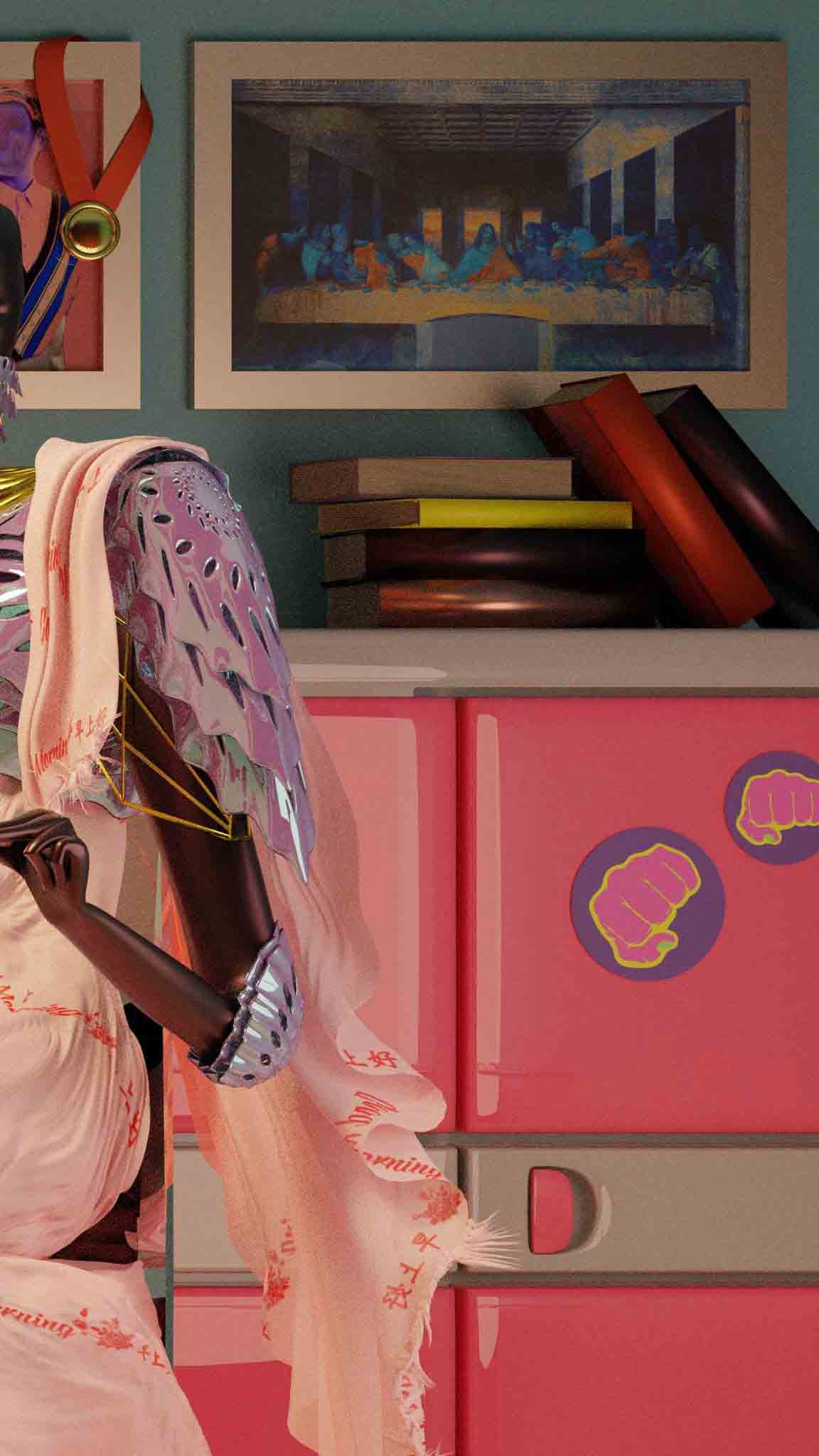
What may appear as circumstantial contradictions in the everyday function as an exercise of moral discernment that is deliberate on the end of the young Filipino artists responsible for this riveting slice of life. “Initially, the aim was to try to understand fashion more than as something we wear. We often overlook the other creative possibilities that can be done with fashion as a medium, which results to a lack of inclusivity in fashion. We wanted to use fashion imagery—its appeal to the eye, its ability to convey narratives—to hopefully engage with other people who aren’t always involved in the fashion community,” details Jude Macasinag.
“The image is the result of a collaboration between me (a designer and design student in France) and Fred Espina (a student-artist currently studying at the Philippine High School for the Arts). One of the media that Espina has been working on is 3D digital rendering, and I wanted to see how we could make my knowledge on fashion and design and his knowledge to such new creative technology meet.” More than a convergence of design, discipline, and distance, this was most importantly a coming together of young Filipino artists with a mutual respect for each other and an unbridled thirst for the truth of life.
In Dividend’s Day
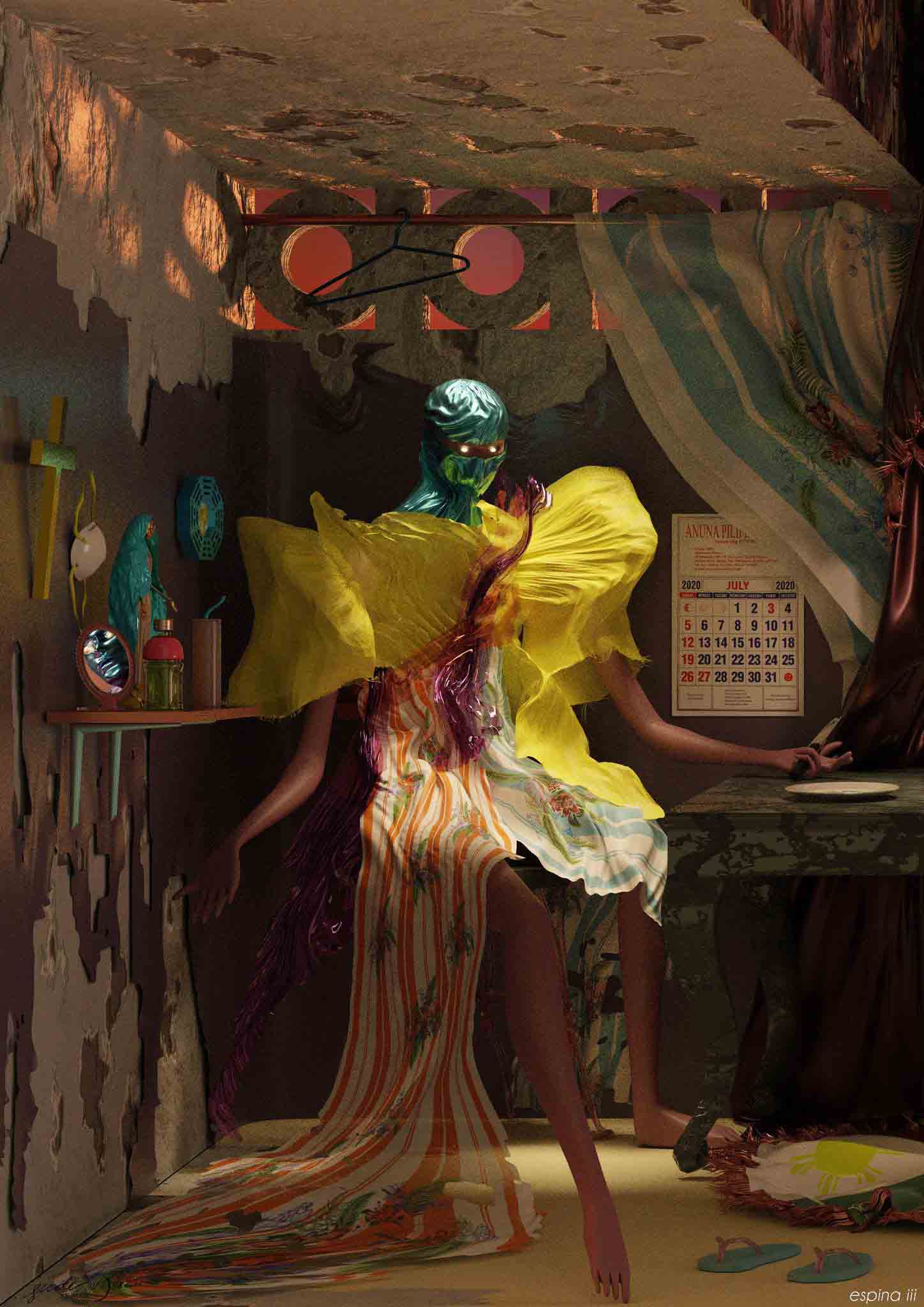
A window into the history that is unfolding before our very eyes, In Dividend’s Day is a visual navigation of things witnessed within the parameters of the pandemic. Exploring the play of power in the mundane coalescing with a modicum of patronizing superiority, the contrasts of simplicity and sense of self-awareness expands into vignettes that can exist on its own, as it does as a connected reality. “It aims to illustrate how a commonly shared crisis influences and creates a greater difference between these systems, whether through a wall that shows decay, a familiar-looking rug tattered by shoes, a figurine of a ship in Chinese porcelain, or direct symbols of political entities,” explains Macasinag on his Instagram post.
“In Dividend’s Day attempts to merge the contradictory notions of the surreal with that of a common circumstance through set precepts of creation in fashion. Beyond its physical forms, it aims to demonstrate how a discipline sometimes deemed as ‘out of touch’ may re-bridge its gap from reality through a guided discourse of various truths and general social understanding.” And by virtue of optical osmosis, it inevitably permeates far more effectively with this perceptive and profound combination of words and fine art.
“If you look closely at some details, they actually reveal the grim happenings in both the Philippines and the rest of the world—how despite a pandemic power is still forced upon the disenfranchised, or how the crisis is (ab)used to favor those in control. And because not everyone will respond to such direct images, it was a matter of re-contextualizing these issues in a more amiable way without romanticizing them or taking them as token—perhaps it was through the usage of color or the amusing 3D novelty that may ease the viewer,” illustrates Macasinag. True enough, in the back and forth of the gaze from whimsical wonder to weary restlessness, there erupts a stream of discomfort that makes you question the grandeur of it all with the lashing of insights that are revealed only if you pay close attention.
While the young Filipino artists, Jude Macasinag and Fred Espina, worked on a variety of textures, exacting a physicality despite the obvious tangible limitations, there sprung the poetic justice of ironies. From the contrast of materials such as paper, plastic, and the kumot, as well as of metalwork and yet-to-be-materialized mediums such as molded rubber, the most stirring proposition were the juxtapositions of tension-filled, terno-swathed otherworldly mannequins flanked by a warship in Chinese porcelain, the devotion of religion and precision of education with blind support, and finally, an Imeldific reference of blood-stained stilettos that sends shivers of a dictatorial bygone that we are committed to never forget in history and justice, all displaying a rooted sense of detachment and inequality that disrupts the very equilibrium of the reality we live in today.
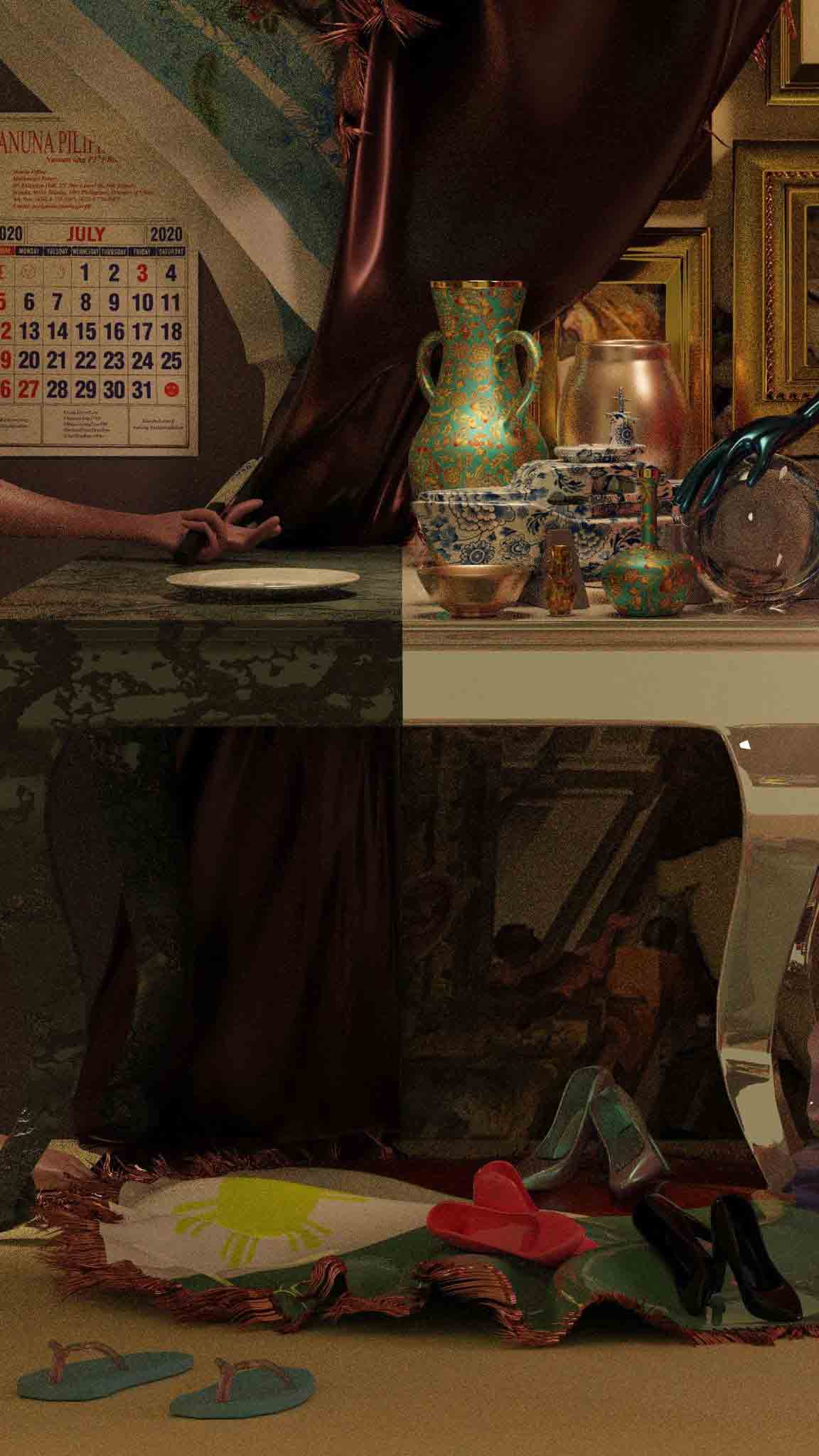
“For me, the idea of getting comfort out of art during a global crisis comes from a bourgeois perspective. We will only truly be comforted once the government takes action according to the interest of the masses rather than to further uplift the rich and those in power,” says Fred Espina. “In a way, it might ease the viewer to know that this plea is being amplified and echoed through art.”
Going Beyond Just Art
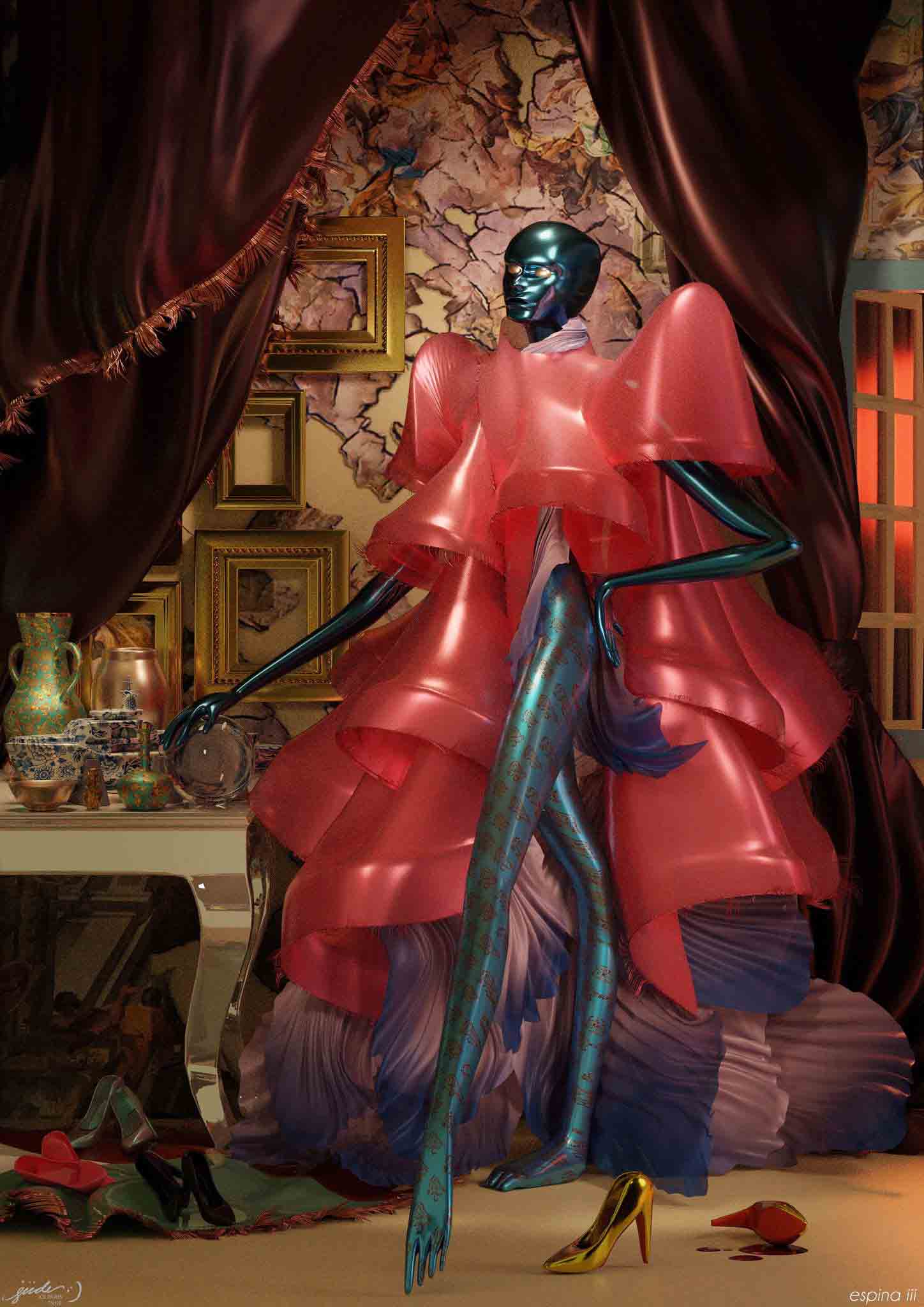
While art does in fact cohabitate with narcissism, this isn’t what these young Filipino artists are here to perpetuate. With purpose and passion coursing through their veins, this merging of the past, present, and what is possible in fashion and technology, In Dividend’s Day is a challenge immortalized by these young Filipino artists, one that will constantly compel the observer to look beyond what is just in plain sight. Art, as with many other tenets of society no longer stands as an altarpiece guarded off for its select few, and more importantly, it vehemently denies the veneration of vacuous vanity.
“Fashion, rooted in its history, has always been about exclusivity. But it’s already 2020, and we should be learning more on how to be inclusive as a community. A part of this means learning to equally collaborate with other people and not only for their technical capability, but also for their capacity to explore as creative individuals. This ability to work as a collective—all with unique minds—will only strengthen and enrich our ideas further,” says Macasinag. “Also, the continuous usage of new things and techniques in fashion should remind us that to innovate is to seek an endless adventure with curiosity, risk, and growth. There’s no fun in being the same all the time.”
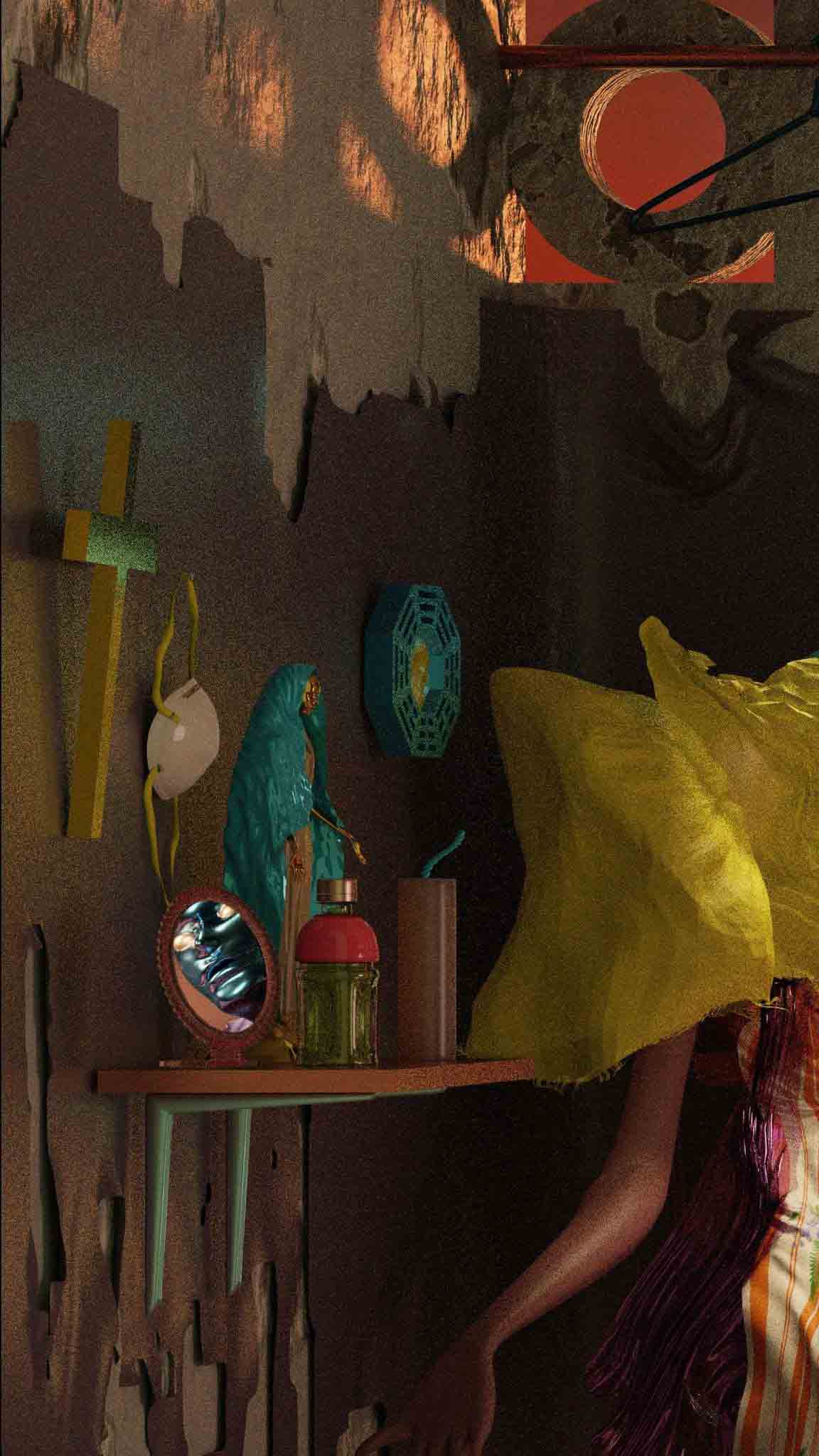
“There’s still so many ways for art to grow. It’s good to think and discuss how we can take our art further from what we normally do,” shares Fred Espina on the prospect of art flourishing with this new non-conforming premise in the future.
True, art is no longer what is was, because as we can clearly see, the stakeholders who will inherit the future are reclaiming the narrative for what it can and should be, not what it used to be. “It feels more freeing to not have to conform to what we know of as fashion. I want to constantly be challenging myself and those around me by using techniques and ideologies in art to continuously grow creatively. I also want others to challenge me and to further challenge other people with these methods of thinking and making,” punctuates Jude Macasinag. “It’s through this way that we will be able to develop our craft and hopefully add value to each and every one in our creative community.”
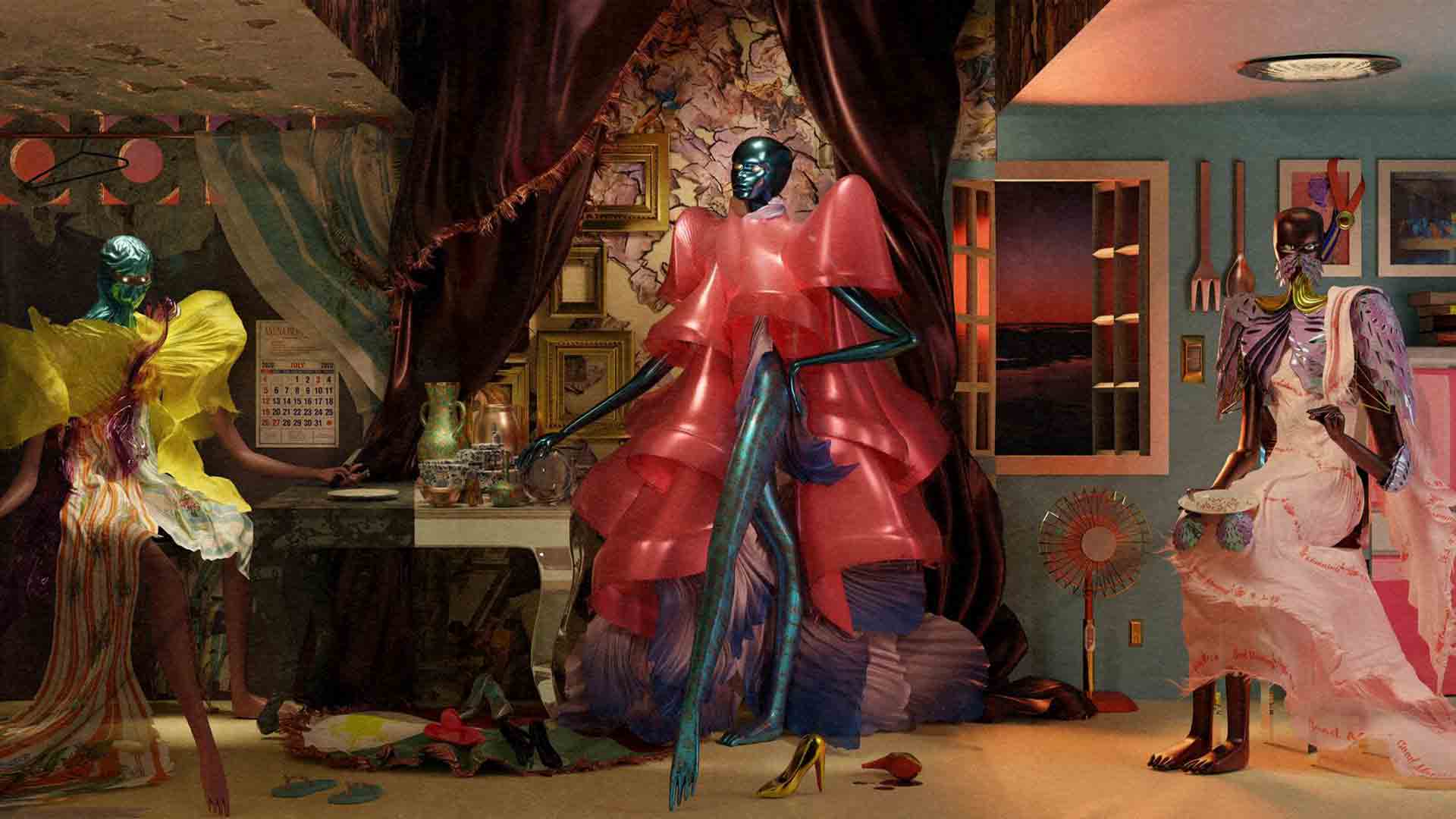
Finally, things mean something and matter more, for these young Filipino artists. Without even having to draw up the composition and colors of what the future holds, the picture is pretty clear: the kids will be more than alright.
CONTINUE READING: INSPIRED BY THE HUMBLE ADOBO, THIS DUBAI-BASED FILIPINO ARTIST SHEDS LIGHT ON THE MIGRANT PLIGHT IN THIS EVOCATIVE SERIES


